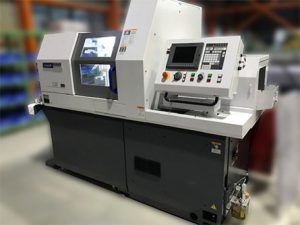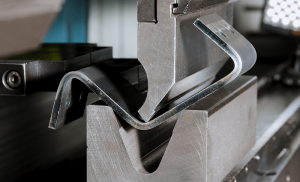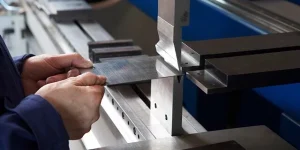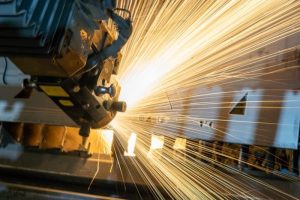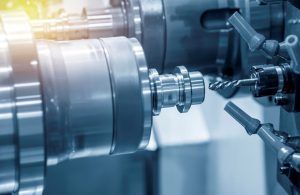Ensure machine alignment, calibrate spindle speed, use quality tools, monitor temperature, employ precision instruments, maintain tool setup
Check Machine Alignment
Machine alignment is the backbone of precision in CNC machining. Misaligned components can lead to inaccuracies, increased tool wear, and potential damage to the machine. In this article, I’ll list down the steps to ensure your CNC machine is correctly aligned.
Bed and Rail Alignment
Begin by measuring the bed and rails of the machine. Check the flatness of the bed with a precision level, which should be level to a tolerance of 0.01mm per meter. An out-of-level bed can result in lost parts after they are machined. For rail alignment, check them using a dial indicator, placing the indicator in the spindle and sliding it along the rail. Make corrections if the deviation is over 0.02mm. In a Texas-based workshop, a rail misalignment of 0.03mm resulted in the loss of machined parts and increased production due to a lack of complete assemblies.
Spindle Alignment
A poorly aligned spindle results in loose tolerances. Check the alignment with a dial indicator and a test bar. Mount the bar at the chuck and measure its runout at both ends. The runout should be under 0.01mm, or else the parts will come out with a bad surface finish and dimensional accuracies. A supplier of machined parts in California realigned their spindle when they realized it was off by 0.02mm, improving other parts’ accuracy by 15% and the scrap rate considerably.
Tailstock Alignment
The alignment of the tailstock is important for CNC lathes. Use dial calls to verify the alignment of the headstock and tailstock while traveling the entire length. The deviation should not exceed 0.02mm and can cause tapered parts and excessive wear on the tailstock quicks. An Illinois machine shop realized their tailstock was off by 0.05mm, producing parts tapered by over 0.1mm in 100mm. Production consistency was improved by correcting the alignment.
Toolholder Alignment
In addition to creating substantial tool wear, misaligned tool holders reduce machining precision. Use a steel ball and an indicator to measure the alignment of the tool holder to the machine spindle. The difference should be under 0.01mm. In Ohio, an automotive parts producer continued changing tools on the CNC machine as the tool holder was off by 0.02mm, leading to increased costs. The issue was rectified, minimizing tool wear by 20%.
Fixture Alignment
Workholding fixtures should meet the machine axes with dowel pins and precision blocks. Fixtures must be aligned with the axes to within 0.01mm.
Verification
Long term assurance can be achieved with regular verification. A schedule should be implemented for verification of alignment with precision instruments, with monthly checks to detect minor misalignments.
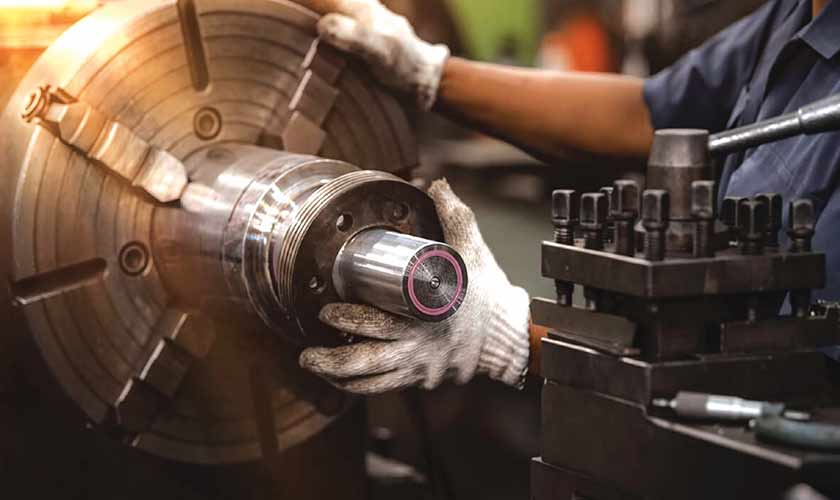
Calibrate Spindle Speed
Correct spindle speed calibration is vital for both precise and accurate CNC machining. Incorrect spindle speeds are associated with tool wear, worse surface adhesion, and dimensional faults. Here’s the complete guide on how to calibrate the spindle speed accurately.
Material requirements
Different materials require different spindle speeds to be properly machined. Normally, aluminum requires much higher speeds compared to stainless steel. For example, aluminum might require speeds ranging from 10000 to 15000 RPM. On the other hand, stainless steel speeds might be only 3000 to 5000 RPM. According to TITANS of CNC, Seattle Aerospace manufacturing company found that by utilizing the correct spindle speed of 5000 RPM when running Inconel titanium parts, tool wear was decreased by 30%.
Use a tachometer
To ensure the best result, it is imperative to double-check that the spindle is running at the right speed. For that purpose, a tachometer might be used. Maintain connection with a tachometer’s sensor and run the machine, now you should compare the actual versus the programmed speed. In case the difference is greater than 5%, the sonic screwdriver will be needed. For example, leading Michigan car manufacturing plant found that the spindle was running at 200 RPMs slower than the programmed speed, causing a poor surface finish on the end product.
Use the software
Most modern CNC machines offer manually calibrated spindle speed control using the software. For that purpose, access the control panel of your machine and program the spindle speed. Do the fine-tuning, since even the slight adjustments in the spindle speed can improve the accuracy and quality of machining. For example, a circuit board manufacturer from California adjusted the spindle speed by only 100 RPM.
Monitor tool wear
Especially increased tool wear might indicate the wrong spindle speed calibration. Regularly inspect the tools and adjust the spindle speed accordingly. Normally, by decreasing the spindle speed by only 10%, you can double the life of the tool. For example, when the leading Mayo Clinic medical gear producer from Texas implemented a more precise spindle speed calibration, the tool wear significantly decreased.
Use the manufacturer recommendations
Normally, every tool and material is associated with the either formal or informal recommendations of the speed of spindle required for machining. Normally, those recommendations are the result of hundreds of hours of testing and are the safe baseline. Refer to your carbide tool producer material, and it might suggest 12000 to 15000 RPMs are ideal for aluminum. For example, a Florida CNC shop found that they significantly improved the machining by doing a strict process adherence to these instructions.
Test cuts
Before the full-scale production, always perform test cuts. There are specialized tests for measuring the surface finish and dimensions of the pieces. Then, adjust the speed in any increments of 100 RPM. Leading New York precision gears producer found that by performing a test cut, their setup time can be decreased by 20%.
Implementation of the real-time monitoring systems
These systems provide the constant monitoring of the spindle and if it is out of range, send an alert. They can be also programmed to automatically adjust the spindle speed. For example, leading aerospace Illinois contractor decreased its scrap rate significantly after implementing such a system.
Document and review
Maintain the records of your speed settings for each tool and material. Periodically, review those records with your tool wear outcomes and adjust the spindle speed accordingly. For example, a custom machining company in Colorado decreased its setup time and increased the consistency of their operations by doing so.
Use Quality Cutting Tools
CNC cutting tools of poor quality will wear rapidly, leading to increased wear and an unattractive “finish” texture. Moreover, poor tools will also affect the precision of the final product causing dimensional inaccuracies. At last, poor quality tools can also cause the problems of keeping the correct measurements of a piece. This is an adjusted informative list of what you can do to select a good cutting tool for your CNC machine and to maintain it.
Choose the right material
The first step towards doing everything properly is choosing the right material of the tool. You can option between high-speed steel HSS ‘s, tungsten carbide, ceramic and diamond tools. Solid carbide tools ensure greater wear resistance and better cutting speeds than HSS ones. A case scenario is when a Michigan-based automotive parts maker improved its speeds by approximately 25% after switching to carbide tools2. This factor increased the shop’s productivity.
Proper tool geometry
Proper tool geometry minimizes cutting forces and reduces the heat during the whole cutting process. Completely optimized geometry results in the efficient removal of cutting debris. For example, when working with aluminum, the tool geometry was optimized by the Texas aerospace company and the production’s cycle time was reduced by as much as 15%1. The shop also stated that the new improved surface finish quality.
Consider using coated tools
New coatings like Tangsten Carbide TiN, and TiAlN increase the work’s productivity by lowering the heat of the cutting process. TiAlN can resist the higher temperatures and has better wear resistance. A case scenario is when a California-based electronics parts maker used these tools for cutting their PCB machinery. The tool’s life grew by 30 % which means less frequent tool replacement and lowered work of CNC machinery.. Regular replacement of cutting tools is necessary. The tools should be cleaned, checked for wearing out, chipping, and dullness before every use.
Some business examples to support my recommendations are as follows.
Implement a rigorous tool inspection process
To reduce the scrap rate by 20%, an Ohio-based precision machining company initiated a strict tool inspection protocol. This example showcases the benefits of detecting tool wear early as it prevents machining errors and reduces additional costs associated with these events.
Maintain optimal cutting conditions
A New York-based machine shop adjusted spindle speeds, feed rates, and other cutting conditions to change the way they machine stainless steel and boost the tool life by 15%. The example supports the need for maintaining proper cutting conditions appropriate for the given tool and material to ensure the preservation of tool quality.
Store tools properly
Although it is a commonly overseen condition, lack of proper cutting tool storage can result in diminished tool quality. A Florida-based custom fabrication shop adopted the tool management system that also offered adequate storage for cutting tools to prevent tool damage and increase tool life by 10%. The example shows that proper cutting tool storage helps to maintain the tool in top shape.
Utilize precision holders
An Illinois-based aerospace contractor with precision machining capabilities that relied on using high-precision tool holders managed to reduce tool runout below 0.005mm. This example suggests that investing in high-quality tool holders is essential as it not only secures stable tool positioning, but also ensures precise machining characteristic of quality machining processes.
Implement tool life management systems
One of the fundamental benefits of modern CNC mills is the utilization of the tool life management systems, which contiguously track the condition of the cutting tool and predict the tool wear. By doing so, they secure against any unexpected machining tool failure and ensure that cutting tools are changed in a timely manner.
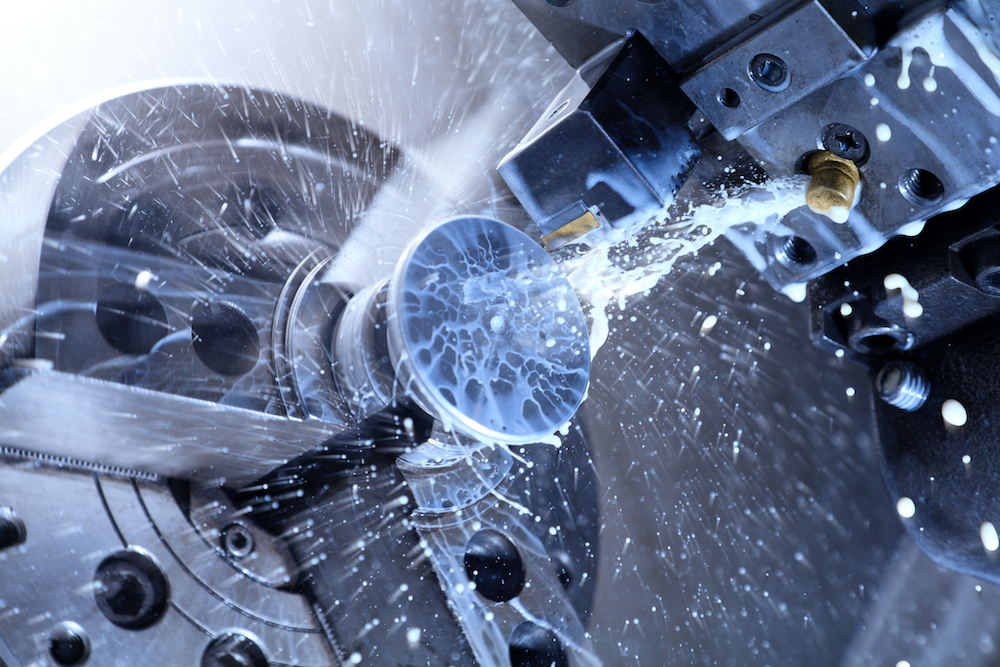
Monitor Temperature
One of the fundamental aspects of CNC machining is the control of temperature. It is important for both the machines and the parts, and monitoring it effectively can ensure the desired precision and quality. Warm parts will expand, negatively affecting the dimensions of the machined parts and wearing the tools and other details. This guide will provide a comprehensive means to monitor and control the temperature in CNC machining.
-
Install sensors: For monitoring temperature in real time, it is paramount to use temperature sensors. They should be installed at critical locations, such as the spindle, the tool holder, and the bed of the machine. Their accuracy should be sufficient, with ±0.1 °C likely to be the best option. A company from California found considerable temperature increases with load and discovered that the 5°C increase in the spindle temperature was associated with 0.02 mm offset of the part.
-
Use coolants: Coolant systems are of vital importance to monitor temperature throughout machining processes. The type of coolant and the coolant flow should be monitored and used appropriately based on the materials and the processes. High-pressure coolant systems are the most beneficial.
-
A Michigan company from the automotive parts manufacturing sector reported a 15% improvement in tool life span after switching to high-pressure coolant systems. Coolants remove heat and have to be managed effectively.
-
Keep the environment stable: An engineer from a Texas-based precision machining company reported that the installation of air conditioning in its shop reduced the temperature variations to ±2 °F.
-
Consequently, part accuracy was increased, and the scrap rates were reduced by approximately 20%. As the parts and the machines are highly susceptible to temperature fluctuations, they have to be kept as stable as possible.
Regularly check coolant temperature
One of the things which need to be checked regularly is the temperature of the coolant itself. Ideally, it should be 20 to 25°C. Regular checks can keep the coolant within this range and prevent overheating.
An electronics manufacturer in Ohio maintained their coolant at 22°C. This helped this firm to reduce thermal distortion and improve quality of parts. Monitoring the temperature of coolant is important for precision.
Use thermal imaging cameras
Thermal imaging cameras help to get a full picture of temperature situation. There are many areas which are not monitored carefully; there are many places which are never monitored with ordinary sensors and gauges. However, it is possible to get through all this mess and find hotspots.
A medical device company from Florida used thermal imaging to find a hotspot on their spindle. As a matter of fact, there was a tiny measure of inaccuracy which was not obvious. However, removing this hotspot from a spindle enabled this company to improve their precision by 10%. This diagnosis is a powerful tool.
Automated temperature control systems
These systems can adjust the coolant flow, spindle speed and many other parameters. It takes time to adjust the coolant flow, it takes time to slow down the spindle, etc. However, if the system is automated, the adjustment will take no time. Still, the adjustment is very important: ignoring thermal problems is impossible. A contractor from minnesota had 25% increase of machine uptime which was caused by reduction of problems with high or low temperature. Moniting is important but it has almost no sense without automation.
Monitor ambient temperature influence
Factor X is ambient temperature. It can have huge influence upon machines and workpieces. A custom machining shop from New York monitored changes of ambient temperature and adjusted its work accordingly. The result was 15% reduction of dimensional errors. This ‘lowered productivity’ is a fantastic benefit.
Employ Precision Instruments
To get accurate and reliable CNC machining results, it is crucial to use precision instruments. In this way, such tools are utilized to measure and calibrate machine components so that the final product is of high quality. The following step-by-step guide will explain how to use precision instruments and, more specifically, dial indicators, micrometers, and coordinate machines.
Use of Dial Indicators
Dial indicators are pocket-sized tools that measure small distances and employee for checking the alignment of a machine component. Dials indicators can measure such variations as 0.001mm. The steps are as follows: 1. place a dial indicator on the spindle and check the runout or alignment of the machine part. For example, a Pennsylvania-based aerospace company utilized dial indicators to check the alignment of their machine beds. The results showed a 0.02mm misalignment, which these experts fixed resulting in quality improvements. The measurements must be accurate for precision machining.
Use of Micrometers
A micrometer is a device that measures external dimensions with a high degree of precision. The instrument is crucial to ensure that items are made to such dimensions as intended. Therefore, they can be used to measure the diameter of a tool, the size of a workpiece, or to calibrate a standard. For example, a Texas medical device manufacturer used micrometers to verify the size of their precision components and managed to reach a tolerance level of 0.005mm. This accuracy is vital for the medical industry when any deviation can be critical. To guarantee that parts are made to exact dimensions, micrometers must be used.
Use of Coordinate Measuring Machines (CMM)
CMM is an advanced instrument that measures the physical geometrical characteristics of an object. This object can have such complex geometries that no other tool can be used. In many cases, CMM accuracy starts at 0.002mm so that they are often applied in quality inspection. For example, an Illinois-based manufacturer of automotive parts reduced their defective rate by 15% as they applied CMMs to measure every detail of each part they made.
Shopping Carts and POS Systems
I vividly remember when I worked at a small family-owned grocery store when I was in college. The grocery store had been open for over thirty years and still used a cash register except for the newly installed credit card machine. The owners were kind people who antiquated software and would not have understood how it worked. I did try to persuade them to earnestly consider implementing a shopping cart in their business. Ideally, a shopping cart or POS system is a combination of hardware and software that enables a business to sell products or services to customers, manage inventory, interact with customers, and gain insights from the information generated. Implementing the POS system would increase efficiency because the order tender process is automatically completed by the POS every time a transaction takes place. Additionally, a customer would not have to wait for the cashier to include a list of all items being purchased in the prices book. Moreover, the POS system can be used to keep the database of products with prices. Additionally, a POS system can be used to generate record of the report of the sold products as the transaction is completed making it easier to calculate the amount saved by applying discounts at time of sale. At any given moment, customers could access regular promotions and acquire a lot of benefits. For example, if five containers are marketed for a certain amount, but one of them is marketed as a fee, POS sales offer will calculate the amount saved and record receipt print and give it to the customer. Finally, sending the receipt through a medium like email contributes to a paper utilized daily. Additionally, the implement could use these times to ascertain the most popular items and manage them accordingly.
Inspect using Optical Comparators
Optical comparators are devices that project a magnified image of a part onto a screen. This screen is divided into two sections and has a crosshair. The part image can be compared to its magnified shadow or one of the rectangles. If a part has even the smallest deviations 0.01mm which cannot be seen by the human eye, optical comparators can pick it out and show. For example, a New-York based shop, which makes complex dies, used these devices to inspect. As a result, the workers could better correct the tools and apply detailed changes, which resulted in the higher quality of the tools. Therefore, it increases the accuracy of the visual inspection.
Digital Calipers
Digital calipers can measure internal and external dimensions, depths and steps quickly and with great accuracy usually 0.01mm. This device does not make a person strain his eyes and read, as well as it gives an accurate indication, which can hardly be mistaken. For instance, a company from Florida made custom parts but eventually used digital calipers to measure and signify dimensions. Their workers found it easier to work with than the manual calipers, which made fewer mistakes in measurements and increased the quality of the products. Overall, digital calipers are excellent and accurate measuring instruments.
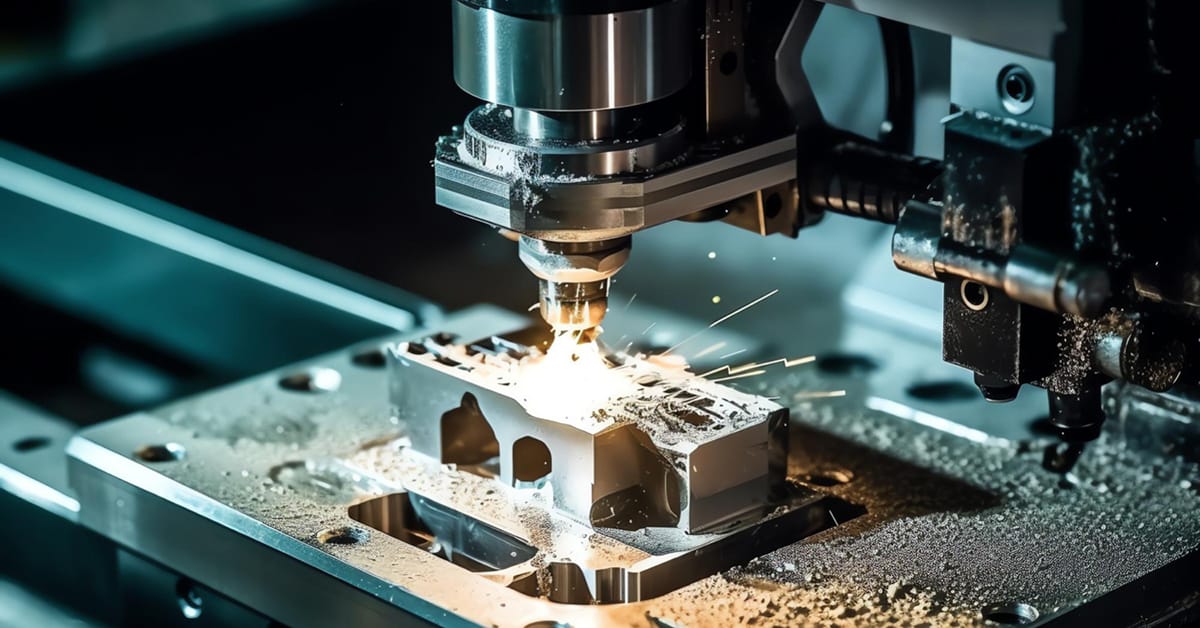
Maintain Tool Holder Setup
The amount of time CNC machines spend idle is around 50%, and the reasons are varied. In addition, since a lot of CNC machining involves precision operation, runout has to be eliminated. This can be achieved with proper maintenance and setup of tool holders.
Regular Inspection of Tool Holders
Tool holders have to be inspected regularly for wear, damage, contamination, and runout, which should not exceed 0.01mm. For example, a Minnesota-based medical device manufacturer reduced tool wear by 20% after implementing regular inspection of the equipment. The company started doing the checks weekly and found minor wear in tool holder runout that could have resulted in significant inaccuracies had it not been for the timely inspections.
Cleaning Tool Holders Thoroughly
‘Clean’ is a keyword where tool holder maintenance is concerned. The equipment and spindle has to be cleaned thoroughly of chips, dirt, coolant residues, and even though washing with soapy water seems like the right fit, solvents are the best choice. The chemical composition of the solvent has to be mild. For example, an Illinois aerospace company saw a 15% improvement in the accuracy of machining after introducing a comprehensive cleaning regimen for their tool holders. It is also a good idea to use a clean but slightly oily, lint-free cloth.
Checking and Tightening Collets
Checking means looking for worn or loose collets. In addition, they have to be tightened properly, usually finger-tight, and according to the manufacturer’s specifications. For example, a Texas-based manufacturing facility of automotive parts noticed that using a torque wrench to tighten the collets properly reduced tool chatter, i.e., the tool does not shake, and improved precision and the smoothness of the surface.
Balancing Tool Holders
Imbalance is the primary reason for tool oscillation, so a balancing machine has to be used effectively. Balancing has to be done every time a tool is replaced, or oscillation is detected.
The following are five steps that any shop can take to ensure that their tool holders are being used properly:
-
Balanced Tool Holders
-
Use High-Quality Tool Holders
-
Implement a Tool Holder Maintenance Schedule
-
Store Tool Holders Properly
-
Train Operators on Proper Handling
Balanced Tool Holders
It is important to balance the tool holders in the machining operations. A California electronics manufacturer found that balancing their tool holders reduced spindle wear and extended tool life by 25%. Balanced tool holders lead to smoother machining operations.
Use High-Quality Tool Holders
It is essential to invest in high-quality tool holders. Precision tool holders with minimal runout and high clamping force can significantly improve machining accuracy. A New York custom fabrication shop upgraded to high-quality tool holders and saw a 20% reduction in setup times and improved part quality.
Implement a Tool Holder Maintenance Schedule
It is important to develop a maintenance schedule for the tool holders. This schedule should include regular inspections, cleaning, balancing, and replacement of worn components. This schedule should be followed and should not deviate at any point in time. An Ohio-based industrial equipment manufacturer implemented a detailed maintenance schedule for the tool holders, which reduced downtime and increased machine uptime by 15%. A structured maintenance schedule can ensure consistent performance.
Store Tool Holders Properly
The tool holders should be stored properly to prevent damage and contamination. The shop needs to store their tool holders in a clean, dry environment and use protective caps to ensure that no dust or debris is able to enter the holders. A Florida aerospace contractor invested in a tool holder storage system, which helped keep their tool holders clean and intact. This also reduced setup times.
Train Operators on Proper Handling
All machine operators should be trained on how to properly handle tool holders. They need to know the different aspects of how to inspect, clean, and install the tool holders. A Colorado-based precision machining company saw a 10% improvement in part accuracy after implementing a comprehensive training program for their operators. Well-trained operators have the skills required to maintain the tool holder setup effectively.



